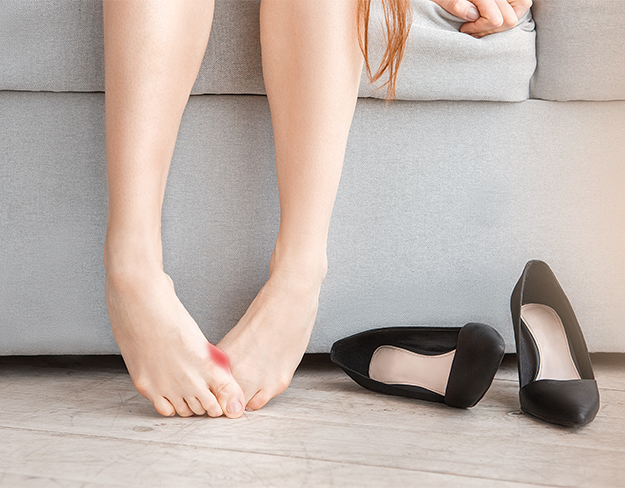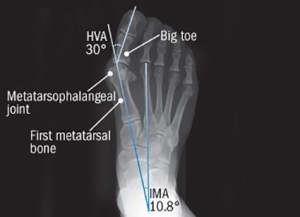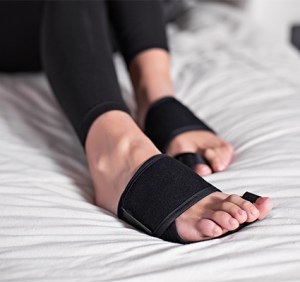
Whether it’s sandal season or boot season, you may be thinking it’s time to do something about that large bump jutting out at the base of your big toe.
Doctors call that bump hallux valgus, but you might know it as a bunion. Bunions form when the bone or tissue at the joint at the bottom of the big toe moves out of place. Years of abnormal motion and pressure on the joint forces the big toe to bend toward the others, which causes an often-painful lump on the joint.
This joint at the base of the big toe carries much of your weight while walking, so bunions can cause severe and constant pain. The joint may become so stiff and sore that shoes may be too painful to wear.
Are shoes to blame?
Bunions often run in families, but they also can be the result of the way we walk or the shoes we wear, says podiatrist Georgeanne Botek, DPM, Head of the Section of Podiatry and Medical Director of Cleveland Clinic’s Diabetic Foot Clinic.
Women develop bunions far more often than men, Dr. Botek says, especially as they get older.
People with flexible joints seem to tolerate their bunions more, Dr. Botek says. But others with stiff joints or arthritis usually have more trouble with their bunions and might develop pain earlier, she says.
If you develop a bunion, talk to your family doctor. Your doctor may refer you to a podiatrist. Podiatrists diagnose and treat conditions of the foot, ankle, and related structures of the leg.
 Treatment without surgery
Treatment without surgery
All bunions are permanent unless surgically corrected. But there are some measures you can take to be more comfortable or to slow a bunion’s progression, says podiatrist Dina Stock, DPM.
“For many people, it may simply be a matter of wearing properly fitting shoes,” Dr. Stock says. “Be sure to choose low-heeled, comfortable shoes that provide plenty of space for your toes and the widest part of your foot.”
Dr. Stock says these seven approaches may relieve the pain and pressure on the toe joint:
Some patients are interested in treating their bunions by stretching the feet to realign the toes, or using devices such as toe spacers or bunion splints, Dr. Botek says. Often though, the device is like a pair of eyeglasses – when you take it off, the benefit is gone. “It won’t completely realign your toe permanently,” Dr. Botek says.
 Bunion splints
Bunion splints
Bunion splints are designed to slow the progress of the bunion and relieve pressure and pain. They offer one way to delay and/or deflect the need for surgery. If a bunion has made your every step painful, a bunion splint is an inexpensive solution.
Bunion splints can’t correct a bunion, and aren’t designed to. Consistent use can slow progress and reduce pain.
When it’s time for surgery
If your bunion is causing pain, your podiatrist may recommend surgery.
Your doctor also may recommend surgery because bunions can result in other painful foot problems, such as hammertoes, bursitis, a bunion below the little toe, or pain in the balls of your feet, Dr. Botek says. Surgery can be done on mild or severe cases.
“When patients come in at an older age, usually it’s because the bunion is causing other problems,” Dr. Botek says. “For these patients, the pain is more constant or is creating problems with the second toe.”
The goal of surgery is to return the big toe to its correct position. A surgeon puts bones, ligaments, tendons and nerves back into correct order, and removes the bump.
There are more than 150 types of bunion surgery, but surgeons typically choose one from about a half-dozen commonly used procedures.
Visit source at https://health.clevelandclinic.org/2014/12/7-ways-to-ease-your-bunions-without-surgery/